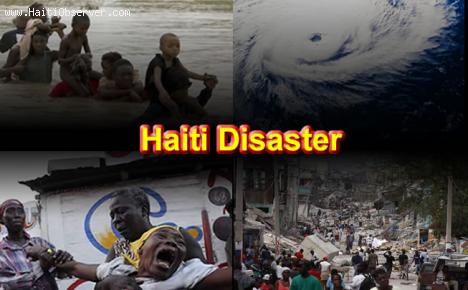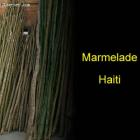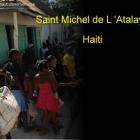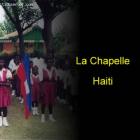ADVERTISEMENT
Disaster
This is the section dedicated to disaster taking place in Haiti or affectiong the Haitian population. We report on Hurricane, Flood, earthquake, etc
Mayor of Quebec, Regis Labeaume, to support new fire station in Port-au-Prince
Régis Labeaume, Quebec City's mayor, declared on Friday, June 14, 2013, that Quebec will construct a new fire station at a cost of $2 million USD in Port-au-Prince. He announced that the project will be financed by a Quebec investor but did not reveal the details of the investment plan. The name of the investor was also not revealed as well. This announcement came 6 months after the Mayor Labeaume visited Haiti and was hosting a Haitian visit to Quebec. Michaëlle Jean, Haiti's UNESCO Special Envoy and Stephanie B. Villedrouin, Minister of Tourism for Haiti were on an official visit to Quebec with the intention to sell the tourism potentials of Haiti to investors.
Airplane crash in Grand'Anse, Jeremie, no survival
June 25, 2013: 4:30 PM (update):
As it is usually the case, the latest information available reported that the crash is from a small airplane and the number of victims has been confirmed to be only two, and not nine
June 25, 2013: 11:50 AM (update):
The crash is from an unidentified helicopter and not a small airplane as previously reported. Also, the number of casualty has been revised upward. It is now confirmed that a total of nine (9) people burned to death and are beyond recognition. The location of the crash has also been changed to Previle, in Grand'Anse.
Rene Preval and the 2010 Earthquake
When the largest earthquake ever recorded in this part of the Caribbean, a 7.0 magnitude behemoth that created more devastation than any other quake in the past 200 years of Haiti's history, struck, President René Préval was, like most Haitians on the January 2010 evening, hoping for a prosperous end to their day. Just before 5pm the earthquake struck and hours later, the death toll was astronomical, the devastation of local aid facilities almost total and the need for leadership paramount.
Criticized for the lack of representation some feel they experienced after the earthquake, Rene Preval made few statement to the press directly following the catastrophe. One such comment, to the Miami Herald, was filled with generalized reports of the devastation with him stating, 'There are a lot of schools that have a lot of dead people in them', and his estimation that thousands had perished.
The Trans-Haitian fault system
It was previously inferred that a lateral left relative motion has been occurring between North American and Caribbean plates along the fault-zone that is located on the northern side of the Hispaniola Island. It was also inferred that a near linear fracture zone known as Septentrional Fault Zone present on the eastern side of the northern Dominican Republic actually extended into the subduction zone of Puerto Rico. Again, extending into Muertos Trench is the Enriquillo-Plantain Garden Fault Zone on the southern side of Haiti, which is the major fault on the boundary of the tectonic plate.
Earthquake Fault Lines Located in Haiti
Haiti is located in the Island of Hispaniola and seismically very active because of its fault lines. Scientists have confirmed that the Haitian side of the Hispaniola Island lies between the North American and Caribbean tectonic plates. According to seismologists, the Caribbean plate has an eastward-bound movement with a drift of 20 mm each year. Tough this looks really small, the movement of the giant plates lead to enormous pressure buildup below the crust of Earth.
The fault lines located in Haiti are caused by the movement of these tectonic plates. There are two fault lines which are known as strike-slip faults. The fault line to the North of Haiti is called the Septentrional-Orient fault zone, abbreviated as SOFZ. Flanking Haiti from the South is the Enriquillo-Plantain Garden fault zone, abbreviated at EPGZ or EPGFZ. Each of these fault zones are known to share 50 percent of relative movement between the Caribbean and the North American tectonic plates.
An earthquake reminder for Haiti, Yesterday Evening with 3.5 shake
The population of the city of Thomazeau was very nervous yesterday evening (2/25/13) following an earthquake that took place there around 7:39:04 pm local time. The earthquake measured 3,5 on the open Richter scale and its epicenter was located 6 km northwest of the city of Thomazeau.
Residents in several nearby towns felt the shake and were terrified. This includes people in the metropolitan area of Port-au-Prince, Delmas, Martissant and Petion-ville. It has not been possible to make an estimate of damage caused by the shock. Many have reported no damage
Insurance to Sell Disaster Coverage in Haiti
Haiti is subject to catastrophic earthquakes, violent hurricanes, and deluges of rain on an intermittent basis.
The amount of damage done by these natural disasters adds up to hundreds of millions of dollars. While in the U.S., a significant number of the population carries disaster insurance, in Haiti its population of 10 million carries virtually none. Data collected shows only 0.3 percent insured against disaster occurrences. To address the financial loss the island experiences every time a natural disaster hits, two agencies have proposed solutions.
The International Finance Corporation, division of the World Bank, is launching a $1.96 million initiative to insure 70,000 small business owners without adequate disaster coverage. Without insurance, business owners can't pay their accounts, because losses have devoured whatever capital left. And a low credit rating disqualifies them for loans necessary to get their businesses operating again.
Haitian Firms get One Percent of $1 Billion-Plus Reconstruction Funds
Center for Economic and Policy Research (CEPR) released a report that of $1.15 billion donated to Haiti post the earthquake, only one percent was received by Haitian firms, $1.15 million. The bulk of pledges was delivered to American-based corporations.
CEPR says it's impossible to find out where all the monies went. The problem is not who the main beneficiaries are, but where they are administering funds. For example, how much is spent on capital expenditures, administrative costs, transportation, and living allowances? And what amount has gone to Haiti's infrastructure?
United States Inter-Agency Development (USAID) organization, global disburser of monies, has refused comment on improprieties CEPR's report has hinted at. It has not offered any explanation why Haitian firms have received such a small share of funding, while Chemonics International Inc. (CII) has disproportionately been given $680 million in the last year. CII is the biggest beneficiary of USAID monies globally. Its $196-million share over the last three years outstrips combined totals of the second, third, and fourth beneficiaries on the disbursement list.
Tips On Dealing With Disaster While Travelling
The weather can be unpredictable. Disasters can occur anytime, anywhere, even if you are on a trip. Being in a different place when disaster hits can be confusing and difficult, especially if you are in another country. Given this, you have to be prepared all the time so that you can deal with disasters while you are travelling.
First of all, it is necessary for you to read every document and policy given to you by your travel agent. This would inform you of rules and regulations involving bad weather during trips and other related circumstances. You should also do the same with your travel insurance so that you can know if you can get a refund should you have to cancel your flight due to a calamity.
How Haiti Government Handles Disasters
Over the years, Haiti has dealt with several disasters. The latest calamity it had to face was Hurricane Sandy, which claimed the lives of more than 50 people. The hurricane also destroyed houses, farms and infrastructure when it battered the country for days. Threats of cholera outbreaks and other diseases also loom over the country as about 350,000 people lost their homes.
With the situation, the government under President Michel Martelly called on the international community for help. Together with the United Nations, the government asked for additional $74 million in relief aid, which will be used to rehabilitate farms and reconstruct homes, among others. Basically, the government is depending on foreign assistance to deal with the disaster's aftermath. The call for help was not ignored, as foreign charity organizations such as Oxfam and the United Nations relief agency have been working to help people affected by the hurricane.
Our objective is to share with you news and information about Haiti and the people of Haiti. Traditions, habits and the way we were or grew are alive in this site. We highly recommend that you Subscribe to our Newsletter and also share with us some of the things that are memorable and made us unique people.


 Something to think about
Something to think about  Marmelade, Haiti
Marmelade, Haiti  Saint Michel de L 'Atalaye
Saint Michel de L 'Atalaye  La Chapelle, Haiti
La Chapelle, Haiti  Life After Death
Life After Death